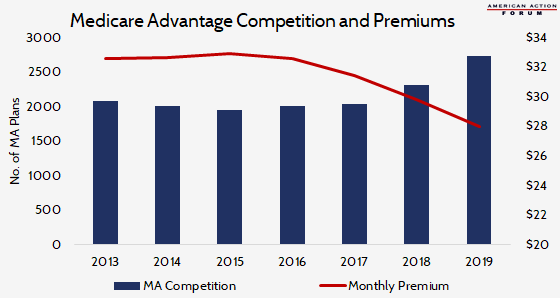Weekly Checkup
October 19, 2018
The Shaming of Big Pharma
Since the release of President Trump’s “Blueprint to Lower Drug Prices” this spring, there has been chatter about the Trump Administration requiring drug manufacturers to publicize the list price of their medications in direct-to-consumer (DTC) advertising. Sensing that the administration was ready to move on such a proposal, the Pharmaceutical Research and Manufacturers of America (PhRMA) preemptively released a “new approach to DTC television advertising” on Monday promising to provide more information on drug prices, apparently in the hopes of curtailing action by the administration.
Nevertheless, later that Monday Health and Human Services Secretary Alex Azar announced new requirements for DTC television advertising for prescription drugs that are available through the Medicare or Medicaid programs. The proposed rule would require ads to include the list price of the drug advertised. The rule would allow for either the list price for a 30-day supply or for the typical course of treatment, whichever is most appropriate. The price must also be current as of the broadcast date of the ad. Finally, the requirement would not apply to drugs with a list price of less than $35.
How valuable would this information be to consumers? There is considerable debate. Critics of the rule argue that list price is not an appropriate metric, as many consumers do not pay list price for their drugs. This critique is partially true: Drug pricing is a complicated business, and an individual’s insurance, along with other factors, affects the actual price paid. Negotiations between insurance plans, pharmacy benefit managers, and the manufacturers mean that the actual price of a drug can vary substantially from the list price.
That said, other considerations suggest such a rule could benefit consumers. Rising deductibles mean more Americans are paying the full cost of their drugs, at least for a time. Additionally, most insured individuals pay coinsurance on their drugs even after reaching their deductible. Coinsurance is a percentage of the cost of the medication, and it is often based on the list price, even if the insurer has negotiated a lower price. In those cases, list price can be helpful in determining the cost to the consumer.
A second point of contention is whether the Centers for Medicare and Medicaid Services (CMS) has the authority to require the disclosures at all. The Food and Drug Administration regulates drug advertising, but CMS is proposing this rule. In effect, CMS is saying, “As the largest purchaser of your product, we demand you comply with this proposal.” To enforce the rule, CMS will publish a list of companies who fail to comply, apparently in hopes of shaming manufacturers into going along with the rule. While that penalty might seem weak, it’s not obvious what penalties the agency could legally impose, short of refusing to purchase specific medications (which they are considering and seeking comment on). Limiting access to specific drugs has long been a political nonstarter—it’s part of why direct negotiations by the HHS secretary over drug prices wouldn’t have much effect.
The president has made it clear he wants to force companies to lower their prices, but the federal government has limited legal mechanisms for accomplishing his goal. If implemented, this proposal probably won’t significantly affect drug purchasing decisions. It could, however, increase public awareness about drug prices.
Chart Review
Jonathan Keisling, Health Care Policy Analyst
Last week in the Weekly Checkup, Tara Hayes noted that the Medicare Advantage (MA) program’s enrollment is increasing while premiums are decreasing, but why are MA premiums decreasing? One reason why MA premiums have fallen in recent years could be the uptick in competition among MA plans. The total number of MA plans available in 2019 will mark a 10-year high.
Worth a Look
Health Affairs: Analyzing Senator Hassan’s Binding Arbitration Approach To Preventing Surprise Medical Bills
New York Times: A Device That Makes Running Faster and Easier
Wall Street Journal: Republican Candidates Play Defense Over Health Care











